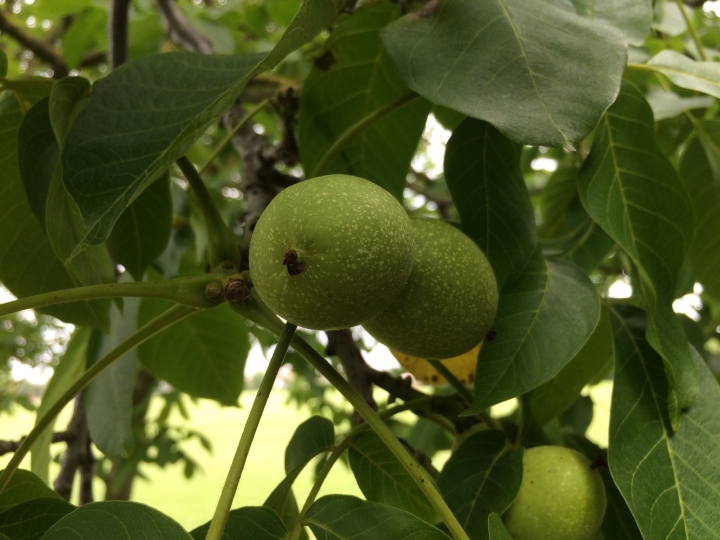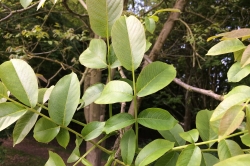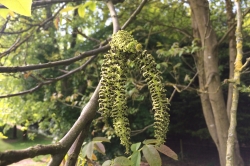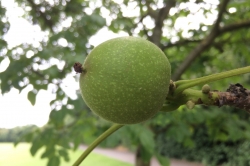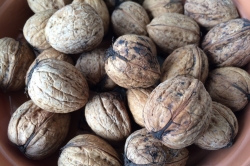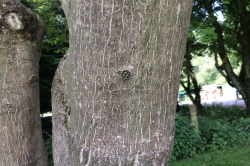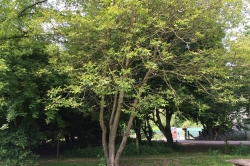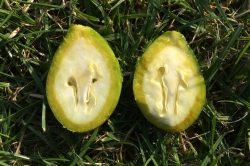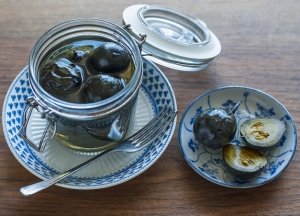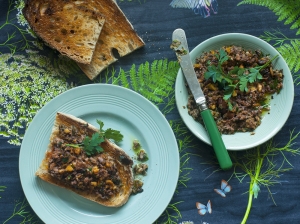The nuts of this tree need no introduction, but the green fruits of early Summer also have a lot to offer to the forager. These green fruits ooze a strongly staining liquid so we recommend using gloves when cutting.
Home / Hedgerow Guide /
Walnut
Walnut
| Hedgerow Type | |
| Common Names |
Common Walnut, English Walnut |
| Scientific Name |
Juglans regia |
| Season Start |
Jun |
| Season End |
Nov |
Please note that each and every hedgerow item you come across may vary in appearance to these photos.
Leaves
The leaves are elliptical in shape but can vary from long and pointy to almost oval and wide. They are arranged in groups of 5, 7 or 9, growing in opposite pairs with a terminal leaf. This terminal leaf is usually larger than the ones in the pairs below. The margin of the leaves is entire (not serrated). When crushed they are strongly aromatic. The leaves only appear late in Spring and fall at the first signs of cold weather in Autumn.
Fruit
An oval fleshy fruit, smooth with white dots in the pale green skin. The fruit appears around June and is initially soft inside, but by the end of July the hard shells that surround the core nut have developed inside the flesh.
Nuts
We are all familiar with walnuts from the shops. As the flesh around the fruit darkens and rots the nuts become ready to be collected, this will be from September to November.
Habitat
Frequently planted as ornamental in parks and gardens, hedges, towns and even parking lots across Britain, but more rare in Scotland.
Originally native from Southeast Europe and Asia this tree has been cultivated here since Roman times. Cultivated populations survive in the wild but it only self-seeds in the warmer counties.
Possible Confusion
Black Walnut (Juglans nigra) from North America is also cultivated as ornamental and naturalized. It isn’t common but it self seeds in the warmer counties. Black Walnut has leaves arranged in more numerous groups (9 to 23) and the terminal leaf is usually smaller. These leaves are longer and pointier with a toothed margin. The bark is dark (brown/purple/black) and with deep fissures in a diamond pattern.
Other (exotic) species of walnuts can be found in botanical gardens and arboretums, but tend to be labelled and these aren’t usually foraging grounds.
Hickory nuts are also closely related and have some similarities, they are occasionally planted as ornamental trees.
None of the above are known to be toxic but some species of walnut and hickory can be very bitter or even inedible.
The green fruits could perhaps be confused with green apples but the foliage doesn’t resemble apple trees and the confusion would soon become evident.
Smell
Hard to describe but the leaves are very aromatic when crushed. Some say it smells like polish.
Frequency
Not uncommon but not as abundant as our native hedgerow trees.
Collecting
The green fruits are collected before the hard shell forms inside (pictured). This happens in late June but can be slightly earlier or slightly later. Simply cut one in half to confirm.
WARNING: when cutting or peeling the juice will stain skin and cutting surfaces, the dark staining can persist for weeks so we recommend using thick gloves and protecting surfaces (you have been warned!).
The green fruits aren’t eaten fresh but are traditionally used in pickles, candied in syrup or infused into liqueurs . The alcoholic infusions are the easiest way to use the fruit. For pickles and sweet preserves the fruits are first leached of the staining juice by soaking in water for several days changing water daily.
The nuts are ready to collect around October as the green fleshy parts rot around the brown hard shell.
Other Facts
The wood of walnut trees is prized by woodworkers.



 (5 votes, average: 3.60 out of 5)
(5 votes, average: 3.60 out of 5)